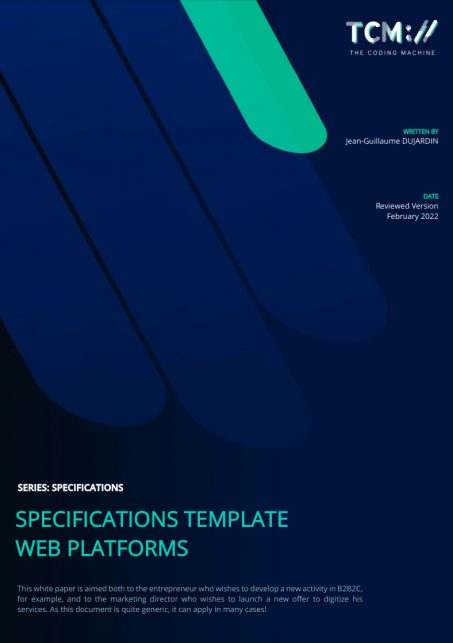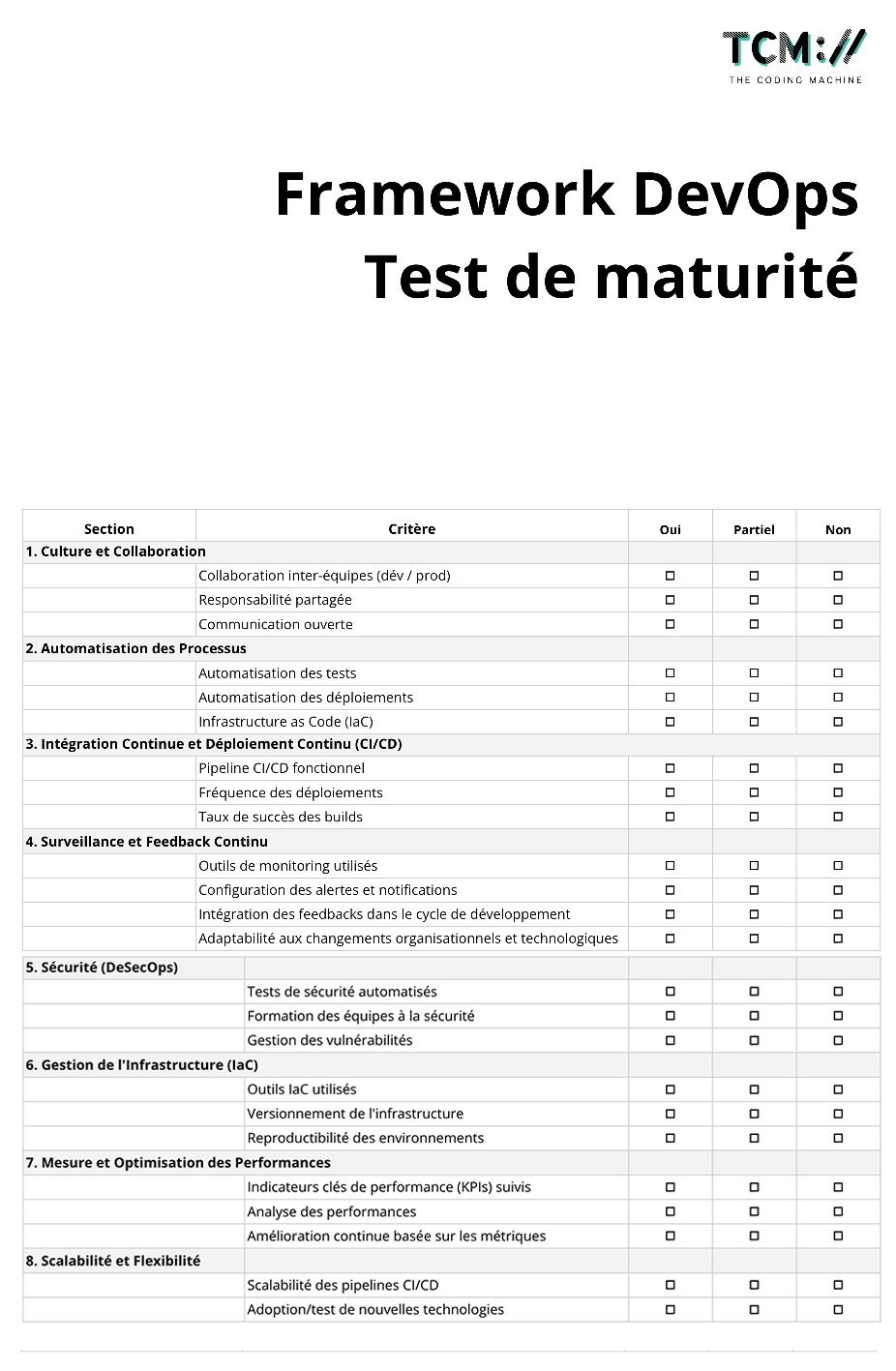
White Book
Specifications Template Web Plateforms
Specifications Template Web Plateforms Free Guide
This white paper is aimed both to the entrepreneur who wishes to develop a new activity in B2B2C, for example, and to the marketing director who wishes to launch a new offer to digitize his services. As this document is quite generic, it can apply in many cases!

In this guide, learn about:
- Elements for prior reflection
- Presentation of the project
- Functional Description of the Web Plateform
- Migration and Integration
INTRODUCTION
This white paper aims to specify which elements must be detailed in the specifications document of your web platform. It offers a model that you can follow, whether you want to launch a call for proposals from providers or use it internally to distribute it to your CIO. It details a typical plan and the questions you should ask yourself when writing your specifications. This white paper is useful for many projects from the website showcase (in this case it will be enough to remove some elements), up to a complete web platform.
This white paper is made up of two documents: a specification template which offers a blank document, and a guide that can assist you in your reflection and then in your writing.
First, what is a web platform?
To summarize, a web platform is an application made up of several bricks whose complexity can vary, but which can be categorized as follows:
- a public site that presents content that makes you known to the public;
- a conversion funnel that can take quite different forms: from a simple offers page (subscription pages for example) to many stages which include, for example, data collection pages, a simulator or an underwriter (areas such as insurance or energy);
- a connected space where your customer can find the interactions, they had with you: consumption, orders, contractual documents, etc.;
- an administrator space or back-office that allows you to manage the various content, configure the elements associated with your offers, make the link with the data of your IS (Information System) and finally offer various dashboards to manage your activity.
This diagram must be adapted according to your activity. In particular if you have a B2B2C business (which is relatively common on the web), you will have to double the upper part of the diagram to take into account the two targets that you are addressing.
Do you have a good idea of what you want to do? Have you listed your features? Have you made a diagram of what you want to see in your platform? It is time to confront them with your goals.
Clearly define your goals!
Often, the platform development project is born out of intuition: “With a new website, our customers will find answers to their questions more easily and we could also win new prospects more easily!” and this is often true!
So, we start working and we imagine a lot of features that we find great and absolutely essential. Now is the time to beware! This is the “more is better” syndrome: when thinking without a constrained budget, there is a natural tendency to want the maximum number of features, to offer the most complete platform possible. TheCodingMachine’s experience often shows that the “do what is necessary” approach is preferable. It is often more interesting to focus on a few key functions and go deeper into them to make it easy for your prospects / customers to adopt and understand them. This is the whole philosophy of an MVP
– Minimum Viable Product.
Indeed, the risk is to develop just for the pleasure of many useless things. Not only will you pay for these developments, but your teams will also spend a lot of time designing and testing them! So, in order not to bite off more than one can chew, you must seek to manage your objectives with the functionalities of your platform.
To answer this, we could imagine this scenario:
what functions should allow me to redirect my clients to self-care, thus reducing calls to my platform by 5% and thus saving an annual cost of X thousand euros; setting up an optimized conversion funnel should enable me to convert Y% of my visitors to this new offer, thus generating an annual turnover of Z thousand euros.
Most functionalities should serve one or more purposes. Thanks to these objectives, you will be able to establish what is essential and what is not. You can also prioritize them to define your roadmap. In addition, once implemented, these objectives will allow you to better manage your business. You will know what efforts need to be made to improve them if they are not achieved, because a web platform project is never really finished. If your objectives are not yet clear, to help you think about it, there are two sets of possible gains:
- objectives linked with the development of your activity: launch a new business, expand the current business… These are generally related with the corporate site or the conversion funnel;
- objectives associated with savings: reduce processing time, make the work of employees easier, reduce the number of requests… most of the cases, they are reflected in the connected part of your platform;
There is also the last type of objectives which is often harder to quantify but which is not negligible: the gains associated with the quality of information or the structuring of processes.
Are your goals clear and well defined? Let’s move on to another difficult subject: the technique!



